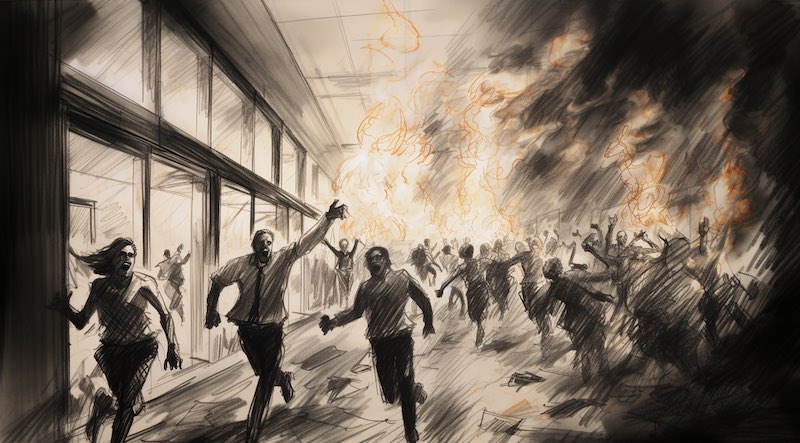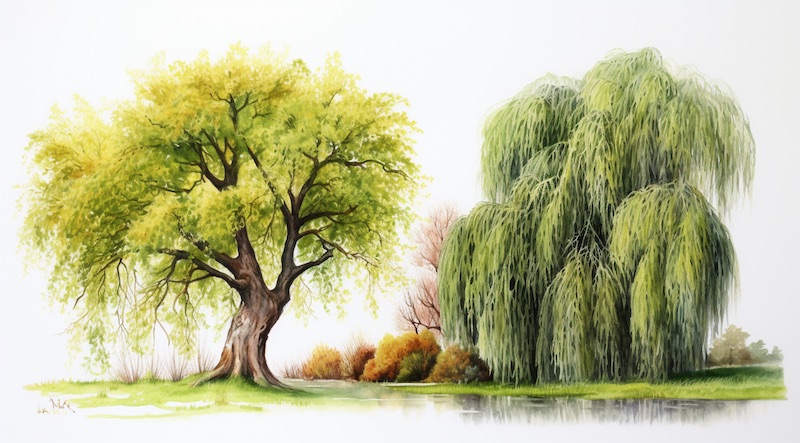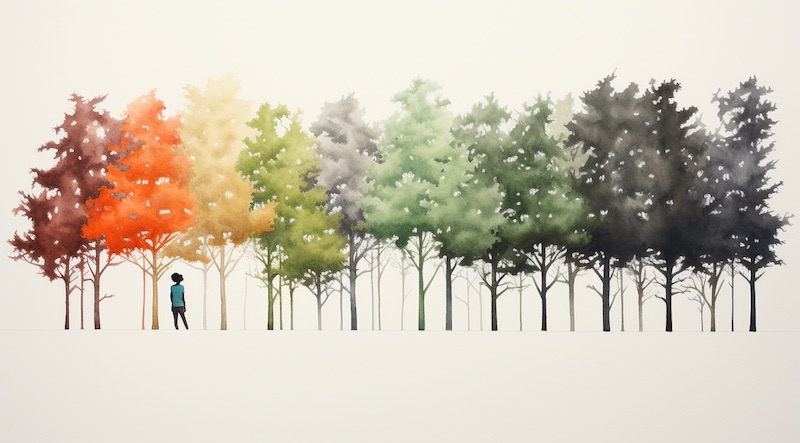Once upon a time in a forest, there were two trees who miraculously had the ability to communicate with each other, but not in a creepy way like in the Wizard of Oz.
One of the trees was an Oak and the other a Willow.

The Oak was tall and strong and mighty. He liked to make sure the Willow knew it.
“I am tall and strong and mighty,” the Oak would tell the Willow. “My roots are so firmly planted in the ground, nothing can move me. I am the greatest most stable tree in the forest.”
After hearing this so many times, the Willow just rolled her eyes. Or her leaves. Or whatever trees roll in situations like that.
She appreciated the Oak, even though he was kind of a jerk.
You see, the Willow was not as big and strong as the oak, but she liked who she was. She prided herself on her flexibility. She could bend with the wind and adapt to her changing surroundings when adaptation was needed.
“Yeah yeah, you’re tall and strong and mighty,” the Willow would say whenever the Oak was on his high horse. “But I can adapt and grow in any direction I choose.”
“Whatevs, Willow,” the Oak would respond. “Don’t worry, I will shade your small and thin little branches. I will take care of you if we ever have any challenging times.”
Life went on. Day after day, the Oak remained solid and stable in its roots. The Willow swayed and fluttered with the wind.
Then one day a big storm suddenly blew through the forest, because sometimes in life you get pummeled by pandemonium without any pre-warning.
The Oak, which prided itself on its strength, was too rigid to bend. The wind ripped off many of its branches and began upending some of its roots. Those were challenging times for that Oak. He emerged the next day pretty darn battered and bruised and torn to shreds.
The Willow, however, just swayed with the wind and adapted to whatever it encountered, as she always did. She came away unscathed.
She won’t admit it to anybody, but the storm gave the Willow so much confidence in who she was, she actually had fun.
After the storm, she felt more emotionally empowered than ever. She was proud of who she was and she continued to flourish.
The once mighty Oak, however, was set back in his growth. He spent years trying to regain all he had lost.

When Challenging Times Bring Chaos
The true test of a company is not how happy employees are when things go well, but how unified they are during challenging times.
At some point in every company, there will be big challenges.
- A SaaS company’s website may go down
- An agency or service business may be at risk of losing their biggest client
- A senior leader may suddenly depart
- Or your company may have to adapt to an AI-driven, robotic world
In my work as a business consultant, I’ve seen many companies crumble amidst the challenging times. They get submerged by the wave of challenge and get torn apart by the pressure.
In fact, that’s why I am brought into companies – to help make sure the transformation is a success.
The thing is, you don’t have to get into crisis mode to recognize which companies will break under the pressure. In fact, there are 5 characteristics that can let you know which companies won’t do well in a crisis.
The 5 Characteristics of Companies That Struggle During Challenging Times
- Slow, inconsistent or poor decision-making processes
- Lack of clear and transparent communication
- An inflexible business structure that can’t quickly adapt to new market conditions
- Lack of contingency planning
- Low employee morale
Companies that have these qualities usually think they are the Oak. When times are good, they believe they are invincible. They feel their strongly rooted systems will save them from disaster.
But that was the exact problem the Oak had. And that didn’t work out so well for him.

The Reason Companies Fail in Challenging Times
I’ve started and sold three companies (which apparently still hasn’t cured my Imposter Syndrome). At some point in all of my companies, we experienced defining moments of crisis.
As it turns out, it was during those challenging times when we proved to be our best. It was during the chaos that we best worked as a unified entity, fearlessly flowing forward in harmony to overcome our obstacles.
I was never more proud of my companies than when the proverbial s**t hit the fan.
The thing is, I’m not special. Anybody can do what I did.
The reason many companies fail is that they don’t spend the time to set the foundation that breeds rapid adaptability.
Many companies wait until the hurricane hits before they contemplate chaos.
Newsflash: By the time the hurricane hits, it’s too late, your house is already flooded. Get out the pail.

Creating A Culture of Calm
Let me tell you how I create a culture of calm amidst chaos. There are only 4 elements to it.
The 4 Secrets To Creating A Culture of Calm in Challenging Times
1. CREATING PURPOSE: It is a proven fact that people are more motivated and more productive if they believe they have a purpose (check out what KPMG did).
👉🏽👉🏽 Believing in a greater purpose is critical in times of crisis.
2. EMPOWERING DECISIONS: People are more productive and solution-focused when they know their ultimate goals, and are empowered to make their own decisions to achieve those goals.
👉🏽👉🏽 Quick and focused decision-making is a must to stay calm in challenging times.
3. TRANSPARENT COMMUNICATION: There’s a difference between over-communication and transparent communication. Transparent communication is ensuring all relevant people are aware of conversations that are relevant to them.
👉🏽👉🏽 In crisis mode, it’s imperative to provide regular and efficient snippets of information. Knowledge breeds calm in chaos.
4. UNDERSTANDING RESPONSIBILITY: Everybody in the company needs to understand where their responsibility ends and anothers starts. Keep in mind, I’m not talking about tasks for a job. I’m talking about responsibility.
For instance, the customer service team’s tasks are to answer customer inquiries. Their responsibility, however, is to create satisfied customers. To accomplish that they must respond quickly, listen to and address concerns, be curious and courteous, etc.
👉🏽👉🏽 During challenging times, it is imperative that each person already understands their responsibilities and does whatever it takes to make them happen.
—
I’m sure you’ve had a lot of people tell you the importance of having a flexible and adaptable company. They are right. But you can’t magically make it happen.
Creating adaptability leads to creating a culture of calm in challenging times.
It is those 4 secrets that create a culture of calm and will transform the way you do things:
- Creating purpose
- Empowering decisions
- Transparent communication
- Understanding responsibility

Challenging Times are Ahead
The world is changing faster than it ever has in history. We are all continually confronted with a forest filled with chaos.
First, there’s a pandemic
Then a remote workforce
There is downsizing
And artificial intelligence
There are robots
And there are rapidly declining global resources
The time of deeply rooted Oak-like thinking is a thing of the past. If you are set in your ways, if your entire goal is to stay rooted in your beliefs – mayhem will prevail when you’re confronted with even the slightest challenge.
And challenging times are somewhere in your future.
It is the Willow-like people, the ones who are flexible and adapt to whatever they are confronted with, that will thrive in today’s forest.
So tell me, what kind of tree are you?
A Somewhat Relevant Quote
“In the midst of chaos, there is also opportunity.“
Sun Tzu, military strategist, life philosopher
Random News
Eggo Nog – Get drunk on breakfast
Song Time – There’s a tune for that time
Polly Wants Your Wallet – The bird bandit is on the loose
Bad Driving – Those who can, do. Those who can’t, teach
